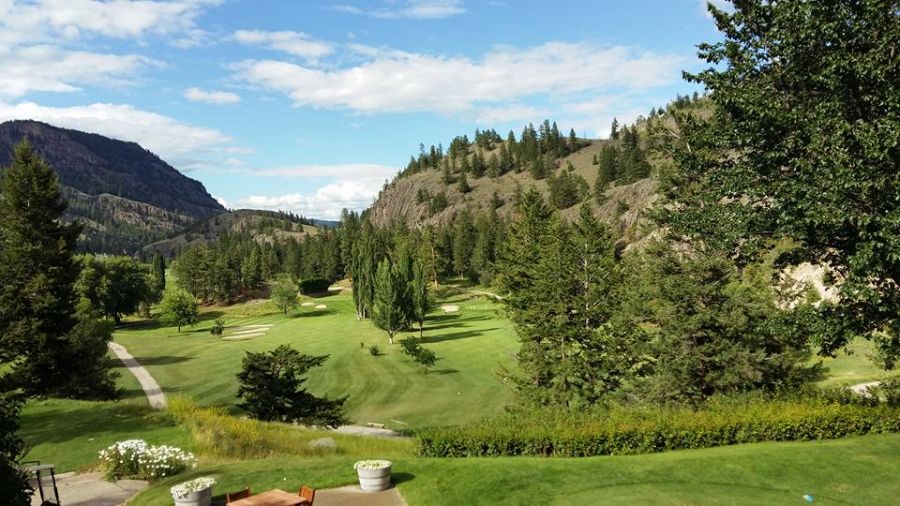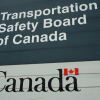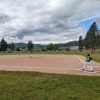A Vancouver developer passed the first hurdle Thursday to proceed with building 46 housing units near the Twin Lakes Golf Course.
With a group of two dozen disapproving Twin Lakes area residents looking on, the board with the Regional District of the Okanagan-Similkameen (RDOS) approved first reading of a motion supporting a staff recommendation to allow phase one of a large housing project near Twin Lakes Golf Course to proceed.
The board heard plans to develop various large-scale housing projects near this golf course date back to 1995, when a rezoning application that remains in place to this day was originally approved.
Current developer Suki Sukhen has applied to the RDOS board to construct more than 230 single-family and multi-family units in phases over the next 25 years as well as build an adjacent RV Park.

The board heard Thursday that no construction will be permitted until the developer satisfies the provincial government and RDOS board that an adequate water supply can be developed and sustained and a “no build covenant” on this property is lifted.
Director Tom Siddon said the original approval to develop a housing project in this area was given 23 years ago and provided those in attendance with a brief history of efforts to develop this area.
While proposals to develop this area have been approved and then abandoned more than once, the current developer wants to do things the right way and ensure all concerns of residents are taken into consideration, he said.

This development would also ensure that the current water system in Twin Lakes undergoes a massive upgrade, which is badly needed, said Siddon.
“There’s a long history to this issue … we’re trying to help solve the problem, not create additional problems,” he said.
Issues relating to climate change “are real” and serious flooding problems Twin Lakes and across the region are going to get worse in future years, said Siddon.

“The residents and taxpayers of the Twin Lakes area had better realize that we’re going to need a more responsible system than to just say no to everything if we’re going to manage our way through what we experienced this year and last year,” said Siddon.
Twin Lakes area has “no logical exit channel” to handle the massive amounts of rainfall and melting snow that cover this area each spring and eight homes needed to be protected by a 10-foot high sandbag wall to keep from being flooded out this spring, he said.
“It’s not a simple matter of just say no because there are consequences of that,” he said.

Residents in the Lower Nipit Irrigation District and Twin Lakes area have been drawing from either lake water or well water, “which has been without limit until recently and without control. As well, there is no sewage treatment and if anything happens to the septic fields surrounding Nipit Lake … welcome to what’s coming down the stream because there will be no system there to manage that.”
This development, which has numerous checks and balances in place during every phase, “is going to lead us to solving those problems over a longer term.”
This project has the potential to become “a feasible development which will bring investors and prosperity to the area, instead of stagnation with no power to do anything, which is where we are today.”
The only director to vote against the motion was Roger Mayer, who represents residents in Keremeos and Hedley.
“At the end of the day, we’re adding 50 more units of water demand to an area that already has a lot of red flags,” he said. “I’ve been around here a long time and the water supply in that area … has been an issue for a long time."
He can’t support adding 50 more units, and potentially many more, to that water system, said Mayer.
Director Michael Brydon said he supported Siddon, pointing out there have been serious issues in the Twin Lakes area relating to flooding or drought for many years and he’s not heard of any long-term solutions.
“What I’m not really hearing is a long-term strategy,” he said. “What we have, at least since the decade I’ve been here, every year there is some problem at Twin Lakes .. either a drought or a flood … the problems are this big and the tax base isn’t.

“If these problems can’t be dealt with, they got to go one of two ways. Either you’ve got to wind the community down or find some other solution. Relying on annual influxes of government money, other taxpayers, is not sustainable. It seems that’s what happens every year.”
The residents who attended the meeting had prepared an eight-page package for the media before the board addressed the issue.
“As citizens of Area D, Twin Lakes, we strongly believe that the conditions proposed to the Twin Lakes Golf Course … are inappropriate as there is reasonable doubt that there is not enough capacity within the aquifer required to sustain the new development, the existing community and the environment,” said the release. “Further, it puts homes and our lakes at risk, whereas the developer is only risking a monetary investment.
“According to various studies and critiques … it is clearly stated that the Twin Lakes does not have sustainable water to sustain the proposed development, even in its first phase.”
The current property owners with houses around the golf course applied for “water licences” from the province to use the same wells used by the golf course, said RDOS planner Brad Dollevoet.

A number of studies by the RDOS and provincial ministries regarding water availability and the results varied “so it’s still somewhat uncertain,” he said.
A well-planned, slowly developed housing project would provide information about if more development could be handled in this area, he said.
“We do feel somewhat comfortable for phase one, but the no-build covenant is to protect us and the community as well from any future development, until we get more information,” said Dollevoet.
The golf course is, by far, the main water user in the Twin Lakes area, he said.
“Given that fact, maybe there is more we can be doing with the developer to have controls in place in conjunction with our proposed monitoring service that we’re proposing today to have restrictions in place for the golf course in case there is a drought as an option,” he said.
This development would not extend beyond phase one if any kind of serious issues develop following phase one, said Siddon.
“There are stopping points if we have a serious problem, it’s the most responsible approach we could take,” he said. “The alternative is to wait until there is a disaster … worst flooding in the future or perhaps a drought.”

Residents should be assured that strict conditions are in place and must be met every step of the way during all development of this area, said Siddon.
“I can tell you the developer, who is here today, has been doing his homework,” he said. “He’s cut his expectations significantly compared to what was invested in … when he thought he had his own property that he could build 250 houses on. Now we’re talking 50 … and only if we meet certain conditions.”
A detailed report by an experienced engineer clearly identifies how the Twin Lakes watershed can be responsibly managed, said Siddon.
CAO Robert Newell said no development will be approved until a water source protection plan is developed and approved by the RDOS board and provincial government.
The development would also have to go through a rigorous public hearing process before any final rezoning application is approved, he said.
To read the RDOS staff report, click here.
















